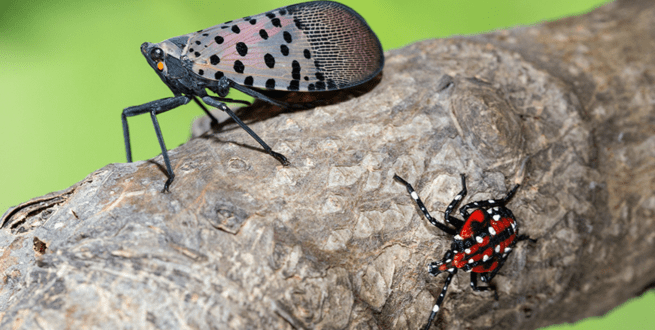
Nov 4, 2021PoPS: The data-driven decision-making tool viewed
The USDA’s Plant Protection and Quarantine (PPQ) program recently created an expert group of advanced quantitative analysts. This group identifies priority projects that could strengthen PPQ’s ability to keep invasive plant pests out of our country and combat any incursions.
They are called the Phytosanitary Advanced Analytics Team (PAAT), and their job is to turn data into insights.
“When we asked the grape industry what it finds concerning, the response was simple: the spotted lanternfly,” said PAAT Director David Schimmelpfennig. The spotted lanternfly (Lycorma delicatula, or SLF) is an invasive pest that is native to China. This plant hopper attacks primarily grapes, but also has been sighted in other crops such as hops, apples, and other fruit trees.


Although the full economic impacts are unclear, research suggests that this species may be particularly damaging to grapes. The insects suck sap from stems, vines, and branches, which may weaken and damage the plant. The SLF’s sugary excrement promotes the growth of sooty molds, which block photosynthesis and reduce the quality of the berries. Spotted lanternfly populations are currently found in 11 states: Connecticut, Delaware, Indiana, Maryland, Massachusetts, New Jersey, New York, Ohio, Pennsylvania, Virginia, and West Virginia.
SLF is a hitchhiking pest. It lays egg masses on almost any flat surface, including vehicles, trailers, outdoor equipment, and containers, and can be spread long distances when people move infested material. If allowed to spread in the United States, it could impact the country’s fruit, ornamental, and forest industries. That’s where PAAT comes in.
The team has been working alongside researchers at North Carolina State University to develop the Pest or Pathogen Spread (PoPS) forecast, a probabilistic simulation of invasive pest and pathogen spread. PoPS is an online computer model that simulates pest spread and pest management activities on a web map.
“The cool thing about PoPS is that you can also simulate control strategies,” said Devon Gaydos, the project’s lead PAAT analyst. “With PoPS, decision-makers can iteratively explore what-if scenarios. What if we use a different treatment? What if we treat different locations? What if our budget changes? PoPS can help answer these questions in a risk-free, simulation environment.”
Several variables go into the PoPS framework. “The PoPS model takes spatial data on pest distribution from survey data, locations of the hosts like grape crops or the tree-of-heaven, as well as temperature and precipitation information,” Gaydos said.
She notes that some parameters come from lab studies, and some are calculated within the model. “For example, to calculate dispersal distance, we run the model 100,000 times with different parameters, compare the outputs to what was observed in the field, and choose the parameter that best matches the observations,” she said. “As we do this over several years, the model gets more and more accurate.”


PPQ applies treatments to knock down high populations of SLF, particularly at high-risk transportation sites like railroads, airports, and maritime ports. PoPS displays pest detections alongside these high-risk sites to guide how users create scenarios. Users can actually draw lines around rails to create treatment strategies. The PoPS model shows how those treatments are likely to impact spread over a single year, or cumulatively over several years. Experts can then see what management activities work best and how spread might be impacted if treatments don’t occur.
Prior research has also shown that PoPS can be an effective communication tool. This year, PAAT will collaborate with managers and stakeholders in SLF-infested States to test ideas for containing the pest. “This is really a win-win,” Gaydos said. “PoPS can help managers test out their ideas, and the feedback from managers will be used to further enhance PoPS’ modeling capability.”
Photo at top: Spotted lanternflies identified by Pennsylvania Department of Agriculture.














